
| Home | Deepsky Atlas | TheAstronews | Links | Solar System | ||||||

Hawaiian Astronomical SocietyConstellations: Sagittarius -- A Centaur Archer |
||||||||||
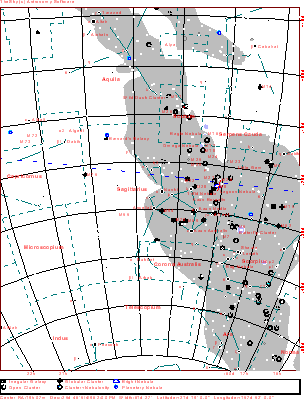
Click the map for a 916x1200 version of the above. Click here for a map better suited for use in the field.
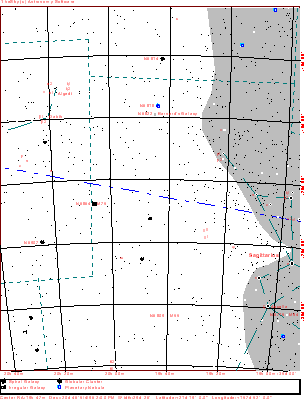
This a more detailed view of the constellation. The map displays stars to magnitude 10, and deepsky objects to magnitude 12. Click here for a map better suited for use in the field.
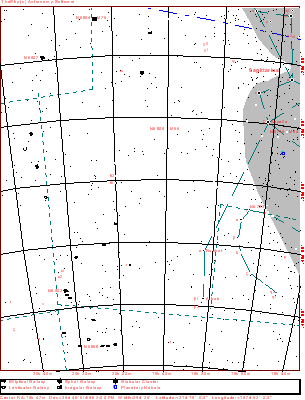
Click here for a map better suited for use in the field.
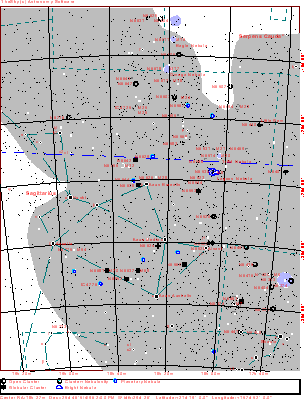
Click here for a map better suited for use in the field.
 6k JPEG M75 (NGC6864, Bennett 124) is a mag. 8.6), 19', rich, and condensed globular found on the border with Capricornus. This is a harder Messier object to resolve than most. Pedro Ré made a one minute exposure with a HISYS22 CCD on a C-14 at f6. 6k JPEG M75 (NGC6864, Bennett 124) is a mag. 8.6), 19', rich, and condensed globular found on the border with Capricornus. This is a harder Messier object to resolve than most. Pedro Ré made a one minute exposure with a HISYS22 CCD on a C-14 at f6.
|
NGC6822 (Caldwell 57) is Barnard's Galaxy, and is located .7° south of the planetary nebula NGC6818 in the northeast corner of Sagittarius. Its large size (15'x13') makes it much fainter than its mag. 10.3 total brightness would indicate. Quoting Mike Florian: Barnard's galaxy can be a tough object to spot due to low surface brightness. It's an irregular dwarf much like the Magellanic clouds but much smaller. Visual spotting takes very dark skies. Barnard himself found it in 1884 using a 5 inch refractor. Hubble saw it in a 4 inch but found it barely discernible at prime focus of the 100". Like most irregulars, this is hot bed of young blue stars, therefore is a good watch for close supernova.
Left image is a Digital Sky Survey download showing both objects. Image to the top, right is a Hubble Space Telescope image of NGC6818. Mike Florian took the photograph of Barnard's Galaxy to the lower, right, making a 4 minute ST6 exposure using a 12" F3.5 Newtonian.
|
 81k JPEG M55 (NGC6809, Bennett 122) is a fairly bright (mag. 7), large (19'), round, rich, but not too condensed globular found 8.2° east of Ascella (zeta Sagittarii). Image from the Digital Sky Survey. 81k JPEG M55 (NGC6809, Bennett 122) is a fairly bright (mag. 7), large (19'), round, rich, but not too condensed globular found 8.2° east of Ascella (zeta Sagittarii). Image from the Digital Sky Survey.
|
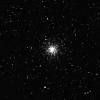 15k JPEG NGC6723 (Bennett 119) is a compact (Dreyer calls it "very large" at 11'), mag. 7 globular cluster located 30' NNE of Epsilon Coronae Australis. Individual stars start at mag. 13, and these are resolvable as chains that trend from center to edge in larger telescopes. Image from the Digital Sky Survey. 15k JPEG NGC6723 (Bennett 119) is a compact (Dreyer calls it "very large" at 11'), mag. 7 globular cluster located 30' NNE of Epsilon Coronae Australis. Individual stars start at mag. 13, and these are resolvable as chains that trend from center to edge in larger telescopes. Image from the Digital Sky Survey.
|
|
 12k JPEG M70 (NGC6681, Bennett 115) is a mag. 8.1, 8', rich, but not too condensed globular found midway between Ascella (zeta Sagittarii) and Kaus Australis (Epsilon Sagittarii). Stars at mag. 14 make this a good one for 10' and above telescopes. Pedro Re made a one minute exposure with a HISYS22 CCD on a C-14 at f6. 12k JPEG M70 (NGC6681, Bennett 115) is a mag. 8.1, 8', rich, but not too condensed globular found midway between Ascella (zeta Sagittarii) and Kaus Australis (Epsilon Sagittarii). Stars at mag. 14 make this a good one for 10' and above telescopes. Pedro Re made a one minute exposure with a HISYS22 CCD on a C-14 at f6.
|
NGC6652 (Bennett 113) lies 1.2° south-east of M69. Dreyer calls it bright (mag. 8.9), small (3.5'), little extended, and well resolved (3 Rs). It contains magnitude 15 stars. A 12" may resolve a handfull of stars.
Image on the left was by Pedro Re, who made a one minute exposure with a HISYS22 CCD on a C-14 at f6. Image on the right is a Digital Sky Survey mosaic containing both objects.
|
|
M17 (NGC6618, Bennett 108) is a gloriously bright (mag. 6) nebula located on the border of Scutum, Serpens Cauda, and Sagittarius. 46' in size, Dreyer describes a "hook" that others call a swan's neck (too short for a swan), or the Greek capital letter Omega (it fails to take into account the rest of the nebula). This is arguably the showpiece of a very showy constellation.
|
 80k GIF An ST7 image of the Omega nebula when only 9 degrees above the horizon. 300 second exposure through a light pollution filter. 12 inch Meade LX200 at F6.3. Adrian Catterall. 80k GIF An ST7 image of the Omega nebula when only 9 degrees above the horizon. 300 second exposure through a light pollution filter. 12 inch Meade LX200 at F6.3. Adrian Catterall.
|
 96k JPEG An image taken with the ST8 camera through a C11. Image processing included unsharp masking. Afterwards, the images was colored. It dramatically shows dust lanes in regions, hardly seen in amateur photographs. Luc Vanhoeck, Breendonk, Belgium, Europe. 96k JPEG An image taken with the ST8 camera through a C11. Image processing included unsharp masking. Afterwards, the images was colored. It dramatically shows dust lanes in regions, hardly seen in amateur photographs. Luc Vanhoeck, Breendonk, Belgium, Europe.
|
 116k JPEG Christian Buil image of M17 through RGB filters. Taken with HiSIS22 camera. 116k JPEG Christian Buil image of M17 through RGB filters. Taken with HiSIS22 camera.
|
M20 (NGC6514) is less spectacular than either M8 or M17, but remains worthy of close inspection. Located 1.3° north of M8, Dreyer describes is as very bright (mag. 6.3), very large (29'), with three dark spokes (called Barnard 85) radiating from the center of the brighter section.
|
 36k GIF M20 in color using ST6 and CFW-6A color wheel. Each image 600 seconds taken through a 7 inch refractor working at F9. Guiding by ST4. Dark subtraction only, no other processing. Brad Ehrhorn, Lake Tahoe. 36k GIF M20 in color using ST6 and CFW-6A color wheel. Each image 600 seconds taken through a 7 inch refractor working at F9. Guiding by ST4. Dark subtraction only, no other processing. Brad Ehrhorn, Lake Tahoe.
|
 349k JPEG Here is what it takes to utilize 9 microns. The Genesis 4" f/5.4 high quality refractor is capable of generating a SPOT that size. 10 minutes unguided no PEC, no flat field. The shorter focal length and fast f/ratio allow the usage of 9 microns but note the image scale is small. Question, why do some of the well known imagers use 2X2 and 3X3 binning? 349k JPEG Here is what it takes to utilize 9 microns. The Genesis 4" f/5.4 high quality refractor is capable of generating a SPOT that size. 10 minutes unguided no PEC, no flat field. The shorter focal length and fast f/ratio allow the usage of 9 microns but note the image scale is small. Question, why do some of the well known imagers use 2X2 and 3X3 binning?
|
NGC6642 (Bennett 112a) is a much smaller and dimmer globular located 1.1° WNW of M22. At mag. 8.8 and 4.5' in size this cluster isn't exactly dim, but it pales before its brighter neighbor. A 6" to 8" scope will show the brighter middle. A 12" will show mottling, and perhaps a few stars, at high power under good conditions.
Image on the left is a Digital Sky Survey mosaic of both objects. Image on the right is a tricolor image of M22. Meade 10" LX200 /6.3. Autoguiding by ST-4. Red, Green and Blue 2m exp. Image taken by Ian King & Nik Szymanek from La Palma. Processed with PhotoStyler and The Hidden Image.
|
 15k JPEG NGC6638 (Bennett 111) is a mag. 9.2 globular cluster located 40' east of Kaus Borealis (Lambda Sagittarii). Dreyer calls it bright, small, round, and partially resolved (2 Rs). A 4" will spot it; a 12" will make it look grainy. From the Digital Sky Survey. 15k JPEG NGC6638 (Bennett 111) is a mag. 9.2 globular cluster located 40' east of Kaus Borealis (Lambda Sagittarii). Dreyer calls it bright, small, round, and partially resolved (2 Rs). A 4" will spot it; a 12" will make it look grainy. From the Digital Sky Survey.
|
 63k JPEG M28 (NGC6626, Bennett 110) is a mag. 6.9 globular cluster located just under 1° NW of Kaus Borealis. Dreyer describes it as bright, large (11'), extremely rich, round, with an extremely condensed middle. It begins to resolve with a 6". Three other globulars lie within 3° of it, one of which is M22. From the Digital Sky Survey. 63k JPEG M28 (NGC6626, Bennett 110) is a mag. 6.9 globular cluster located just under 1° NW of Kaus Borealis. Dreyer describes it as bright, large (11'), extremely rich, round, with an extremely condensed middle. It begins to resolve with a 6". Three other globulars lie within 3° of it, one of which is M22. From the Digital Sky Survey.
|
 82k JPEG NGC6624 (Bennett 109) is a globular cluster located 48' south-east of Kaus Media (Delta Sagittarii in the top left of the Digital Sky Survey image). Described as very bright, fairly large, round, and the usual, almost meaningless "well resolved," it contains stars of magnitude 16 mag. 13.8 in more modern measurements). An 8" will show few, if any stars, but the cluster rewards with a much brighter middle. A 12" under good conditions will resolve over a dozen stars under good conditions. 82k JPEG NGC6624 (Bennett 109) is a globular cluster located 48' south-east of Kaus Media (Delta Sagittarii in the top left of the Digital Sky Survey image). Described as very bright, fairly large, round, and the usual, almost meaningless "well resolved," it contains stars of magnitude 16 mag. 13.8 in more modern measurements). An 8" will show few, if any stars, but the cluster rewards with a much brighter middle. A 12" under good conditions will resolve over a dozen stars under good conditions.
|
 112k JPEG M25 (IC4725) is an open cluster of 50 mag. 6-10 stars spread over more than .5°. It is 6.2° north of Kaus Borealis (Lambda Sagittarii, the tip of the "teapot's" lid). From the Digital Sky Survey. Additional Gamma correction provided. 112k JPEG M25 (IC4725) is an open cluster of 50 mag. 6-10 stars spread over more than .5°. It is 6.2° north of Kaus Borealis (Lambda Sagittarii, the tip of the "teapot's" lid). From the Digital Sky Survey. Additional Gamma correction provided.
|
 61k JPEG M18 (NGC6613) is a rather sparse, cluster with little condensation. Located 1° south of the better known M17, it shines at mag. 6.9 and is 9' in size. Image is from the Digital Sky Survey. 61k JPEG M18 (NGC6613) is a rather sparse, cluster with little condensation. Located 1° south of the better known M17, it shines at mag. 6.9 and is 9' in size. Image is from the Digital Sky Survey.
|
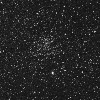 78k JPEG M24 (NGC6603, Bennett 107a) is a mag. 11 open cluster described as very rich, very condensed, round, and suspended in the Sagittarius star cloud. Size is 5'. 78k JPEG M24 (NGC6603, Bennett 107a) is a mag. 11 open cluster described as very rich, very condensed, round, and suspended in the Sagittarius star cloud. Size is 5'.
Looking at the image, it is hard to tell the cluster from the Milky Way. Some sources (including, most likely, Messier) identify M24 with the much larger Sagittarius star cloud, an incredibly rich patch visible to the naked eye. NGC6603 remains the small, mag. 11 cluster. From the Digital Sky Survey. Additional Gamma correction provided.
|
 116k JPEG NGC6569 (Bennett 106) is a globular cluster located in the "spout" of the "teapot", 3.8° south-east of Alnasl (Gamma-2 Sagittarii). Dreyer says it is quite bright (mag. 8.7), large (5.8'), round, and well resolved (three Rs), containing stars of magnitude 15 and fainter. A 12" will make the cluster look "grainy", but reveal few actual stars. 116k JPEG NGC6569 (Bennett 106) is a globular cluster located in the "spout" of the "teapot", 3.8° south-east of Alnasl (Gamma-2 Sagittarii). Dreyer says it is quite bright (mag. 8.7), large (5.8'), round, and well resolved (three Rs), containing stars of magnitude 15 and fainter. A 12" will make the cluster look "grainy", but reveal few actual stars.
While in the area (42' west of NGC6569), try NGC6558, another globular described as fairly bright (mag. 8.6), fairly large (3.7'), round, and brightening slightly toward the middle. It receives another triple R, with magnitude 16 stars. Steve Coe could resolve about ten of them in a 13".
Image from the Digital Sky Survey.
|
 64k JPEG Two globular clusters, NGC6544 (Bennett 103) and NGC6553 (Bennett 105) lie just to the south-east of the Lagoon Nebula (M8). Indeed the more northerly cluster lies only 39' away from the edge of the Lagoon's nebulosity. Dreyer describes it (NGC6544, Bennett 103) as quite faint (mag. 8.3), fairly large (8.9'), and slightly "unround". Dreyer also calls it "resolvable". Use magnifications over 200x to begin to resolve this cluster in an 8" to 10". 64k JPEG Two globular clusters, NGC6544 (Bennett 103) and NGC6553 (Bennett 105) lie just to the south-east of the Lagoon Nebula (M8). Indeed the more northerly cluster lies only 39' away from the edge of the Lagoon's nebulosity. Dreyer describes it (NGC6544, Bennett 103) as quite faint (mag. 8.3), fairly large (8.9'), and slightly "unround". Dreyer also calls it "resolvable". Use magnifications over 200x to begin to resolve this cluster in an 8" to 10".
NGC6553 (Bennett 105) lies 1° south-east of NGC6544. Dreyer describes this one as faint (mag. 8.3), large (8.1'), little extended, and very gradually brightening a little toward the middle. It rates two "Rs", meaning it should resolve more easily than its neighbor. This is true for telescopes 12" and up. Dreyer's estimate that the cluster consisted of magnitude 20 stars is grossly overstated. More recent estimates yield mag. 14.7.
Image from the Digital Sky Survey.
|
 77k JPEG M21 (NGC6531) is an open cluster located .8° NE of the Trifid Nebula. Dreyer describes it as pretty rich with little central condensation. Overall magnitude is 5.9, size is 13', stars estimated from mags. 9-12. This extract from the Digital Sky Survey shows M21 in the upper left, the Trifid in the lower right. Additional Gamma correction provided. 77k JPEG M21 (NGC6531) is an open cluster located .8° NE of the Trifid Nebula. Dreyer describes it as pretty rich with little central condensation. Overall magnitude is 5.9, size is 13', stars estimated from mags. 9-12. This extract from the Digital Sky Survey shows M21 in the upper left, the Trifid in the lower right. Additional Gamma correction provided.
|
 63k JPEG NGC6522 (Bennett 101) is one of a cute pair of globular clusters located 30' northwest of the "spout" of the "teapot." The guide star's name is Alnasl (Gamma-2 Sagittarii). Both clusters shine through a rich, variegated Milky Way field. Dreyer describes NGC6522 as bright, fairly large, round, with considerable, gradual brightening toward the middle. This is another of Dreyer's "well resolved," globulars, meaning that a 12" will resolve a few stars on a good night, and make the cluster look "grainy" the rest of the time. Dreyer's estimate of magnitude 16 stars is a little extreme. More recent measurements list stars from mag. 14 (photographic). 63k JPEG NGC6522 (Bennett 101) is one of a cute pair of globular clusters located 30' northwest of the "spout" of the "teapot." The guide star's name is Alnasl (Gamma-2 Sagittarii). Both clusters shine through a rich, variegated Milky Way field. Dreyer describes NGC6522 as bright, fairly large, round, with considerable, gradual brightening toward the middle. This is another of Dreyer's "well resolved," globulars, meaning that a 12" will resolve a few stars on a good night, and make the cluster look "grainy" the rest of the time. Dreyer's estimate of magnitude 16 stars is a little extreme. More recent measurements list stars from mag. 14 (photographic).
NGC6528 (Bennett 102) is described as fairly faint, quite small, round, with a gradually brighter middle. Dreyer makes similar comments about the cluster's resolvability: It is well resolved, with stars of magnitude 16. In this case, the magnitude estimate is relatively accurate, and the cluster harder to resolve than NGC6522.
Image from the Digital Sky Survey.
|
 134k JPEG NGC6520 (Best 90) is a mag. 7.6 open cluster located 2.5° north of Alnasl (Gamma2 Sagittarii, the tip of the teapot's spout). Dreyer describes it as fairly small (6'), rich, little condensed, with about 22 stars from 9-13. Sitting 4' west is the inky dark nebula, Barnard 86 (about 4.5'x3'). This is perhaps the most exquisite spot in the heavens. Cluster and nebula sit in the powdery Saggitarius Milky Way, in a region sliced by dark lanes. The cluster features stars ranging from pale yellow to blue, plus a brilliant orange star. The contrast with the coal black nebula could not be more striking. Image from the Digital Sky Survey. 134k JPEG NGC6520 (Best 90) is a mag. 7.6 open cluster located 2.5° north of Alnasl (Gamma2 Sagittarii, the tip of the teapot's spout). Dreyer describes it as fairly small (6'), rich, little condensed, with about 22 stars from 9-13. Sitting 4' west is the inky dark nebula, Barnard 86 (about 4.5'x3'). This is perhaps the most exquisite spot in the heavens. Cluster and nebula sit in the powdery Saggitarius Milky Way, in a region sliced by dark lanes. The cluster features stars ranging from pale yellow to blue, plus a brilliant orange star. The contrast with the coal black nebula could not be more striking. Image from the Digital Sky Survey.
|
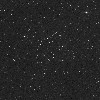 73k JPEG M23 (NGC6494) is an uncondensed open cluster in the Northwest corner of the constellation. Dreyer calls it pretty rich, bright (mag. 5.5), with stars at about mag. 10. Size is 27'. From the Digital Sky Survey. Additional Gamma correction provided. 73k JPEG M23 (NGC6494) is an uncondensed open cluster in the Northwest corner of the constellation. Dreyer calls it pretty rich, bright (mag. 5.5), with stars at about mag. 10. Size is 27'. From the Digital Sky Survey. Additional Gamma correction provided.
|
 51k JPEG NGC6440 (Bennett 98a) is a globular cluster located in north-western Sagittarius. It sits 2.3° south-west of M23 and 4.1° north-west of M20 (the Trifid Nebula). Described as fairly bright (mag. 9.7), fairly large (5.4'), round, with a brighter middle, high magnification will not resolve much of this cluster, but will show a stellar nucleus (8") and a "ragged edge" (13"). 51k JPEG NGC6440 (Bennett 98a) is a globular cluster located in north-western Sagittarius. It sits 2.3° south-west of M23 and 4.1° north-west of M20 (the Trifid Nebula). Described as fairly bright (mag. 9.7), fairly large (5.4'), round, with a brighter middle, high magnification will not resolve much of this cluster, but will show a stellar nucleus (8") and a "ragged edge" (13").
NGC6445 (Bennett 98b, Best 89) is a planetary nebula located 21' north of NGC6440. It has no NGC description and the given magnitude is 13. How did Bennett find it with just a 5" refractor? Most viewers say this object looks brighter than the given by a full magnitude. The object looks vaguely box shaped (36"); an 8" will bring out the darker center. A narrow band nebula filter helps. A white and blue double star (mag. 8) sits nearby.
Both objects fit into a medium power field, making a striking combination. Image from the Digital Sky Survey.
|
If you have any questions about the Hawaiian Astronomical Society
please
(link requires javascript).